01:22
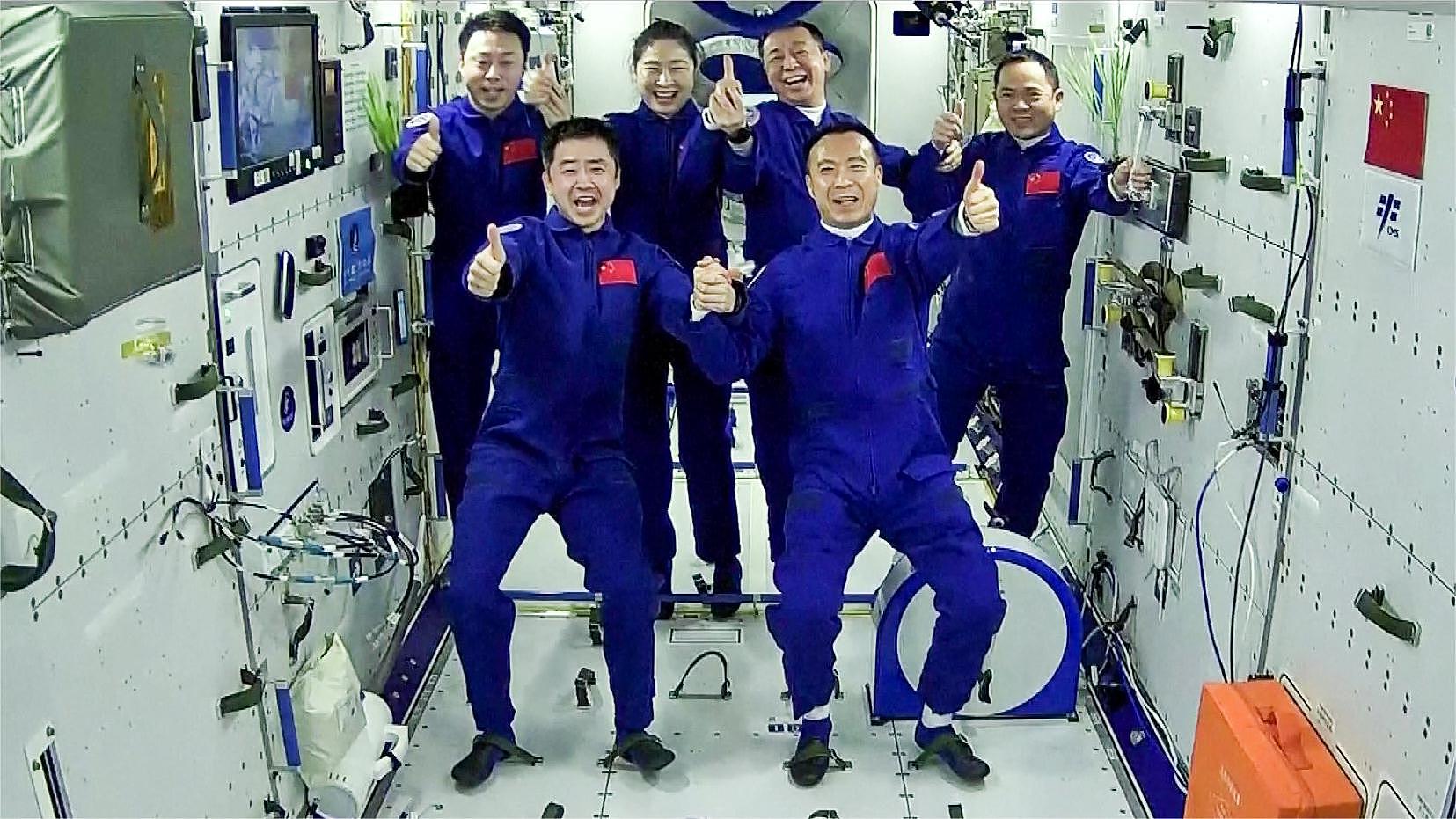
China's newly completed three-module space station witnessed a historic moment on Wednesday when the Shenzhou-14 crew on board welcomed the three taikonauts of the Shenzhou-15 mission, witnessing six taikonauts at the in-orbit China Space Station (CSS) for the first time.
At 7:33 a.m. (Beijing Time), the Shenzhou-14 taikonauts opened the door of their "space home," welcoming the Shenzhou-15 crewmates with warm hugs. The six then took a group photo to record the unprecedented moment, shouting in chorus "CSS is always worth looking forward to."
The Shenzhou-15 crewed spaceship, launched on Tuesday night, docked with the front port of Tianhe core module at 5:42 a.m. (Beijing Time) on Wednesday, said the China Manned Space Agency (CMSA).
07:54
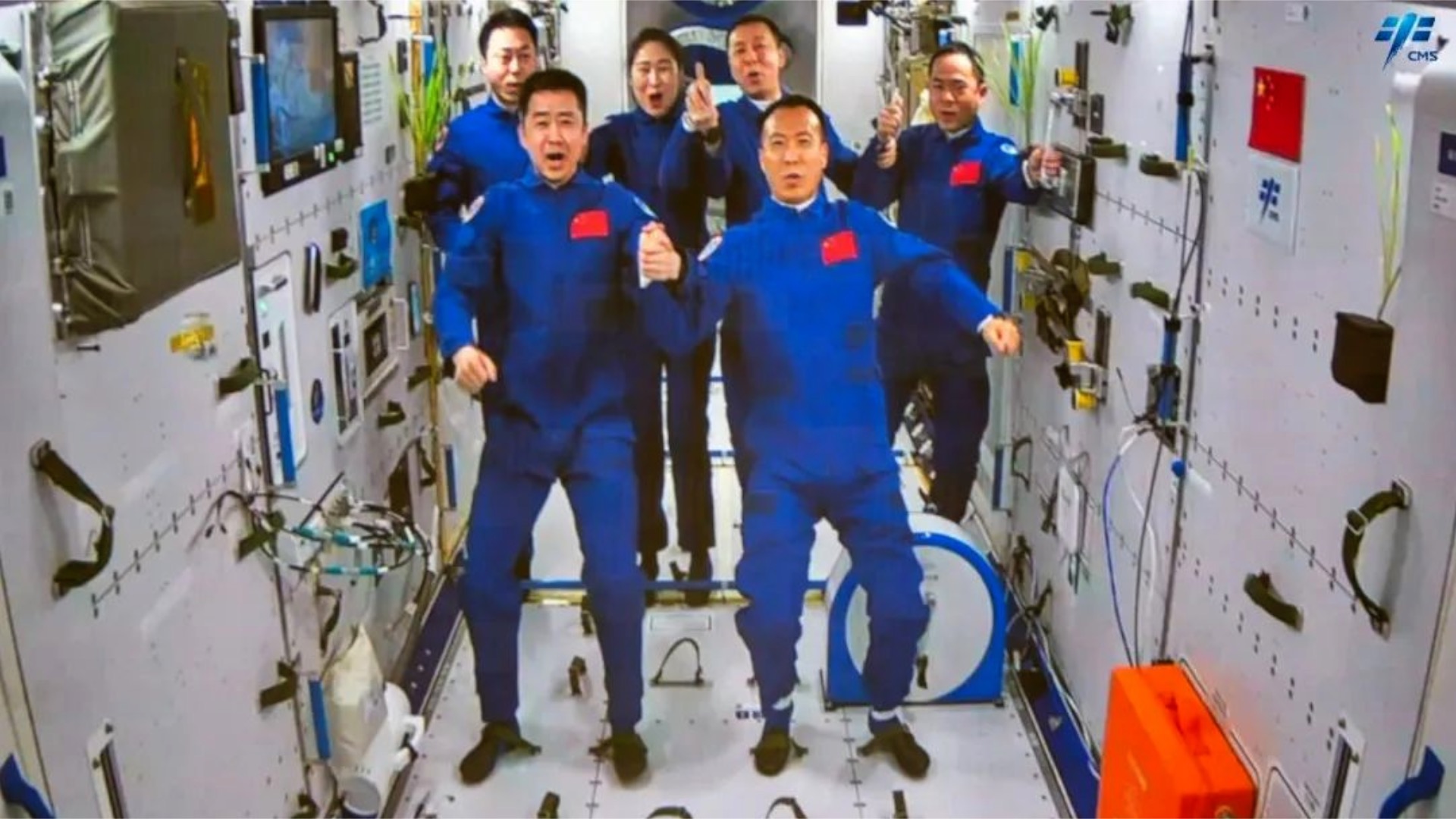
Historical crew handover to become routine
The meeting of the Shenzhou-15 and Shenzhou-14 crews kicked off the first in-orbit crew rotation at the CSS. The six astronauts will live and work together for about five days to complete their tasks and handover, said Ji Qiming, spokesperson for the CMSA.
During the rotation of the two Shenzhou mission crews, the six will complete a work handover concerning the status of the space station combination and materials, as well as the experimental projects. Meanwhile, the Shenzhou-14 crew will continue to make preparations for their return, Ji added.
During the handover, the information of the two manned spaceships will be transmitted through different lines for exclusiveness and accuracy, according Gao Xu, a senior spaceship designer at the China Academy of Space Technology.
An emergency evacuation strategy based on the situation of two berthing spaceships has been worked out to ensure the safety of astronauts, said Gao. An average of two launches of crewed spaceships every year will become routine in the future, and the rotation can verify the feasibility of the regular rotation mode that will follow.
"Humankind will not be confined to Earth," Gao said, noting that "they will certainly go farther into outer space to explore."
With six astronauts in orbit, it's a challenge to allocate resources such as space, equipment and materials rationally for more efficient utilization, according to the China Astronaut Research and Training Center.
There are two sets of kitchen equipment in orbit, allowing the six to prepare a meal at the same time and share food with each other, said the center, noting that the two modules of the space station are equipped with two sanitary areas and six sleeping areas.
Moreover, the processing capacity of the environmental control and life support system will be increased to meet the maximum demand for six people.
02:25
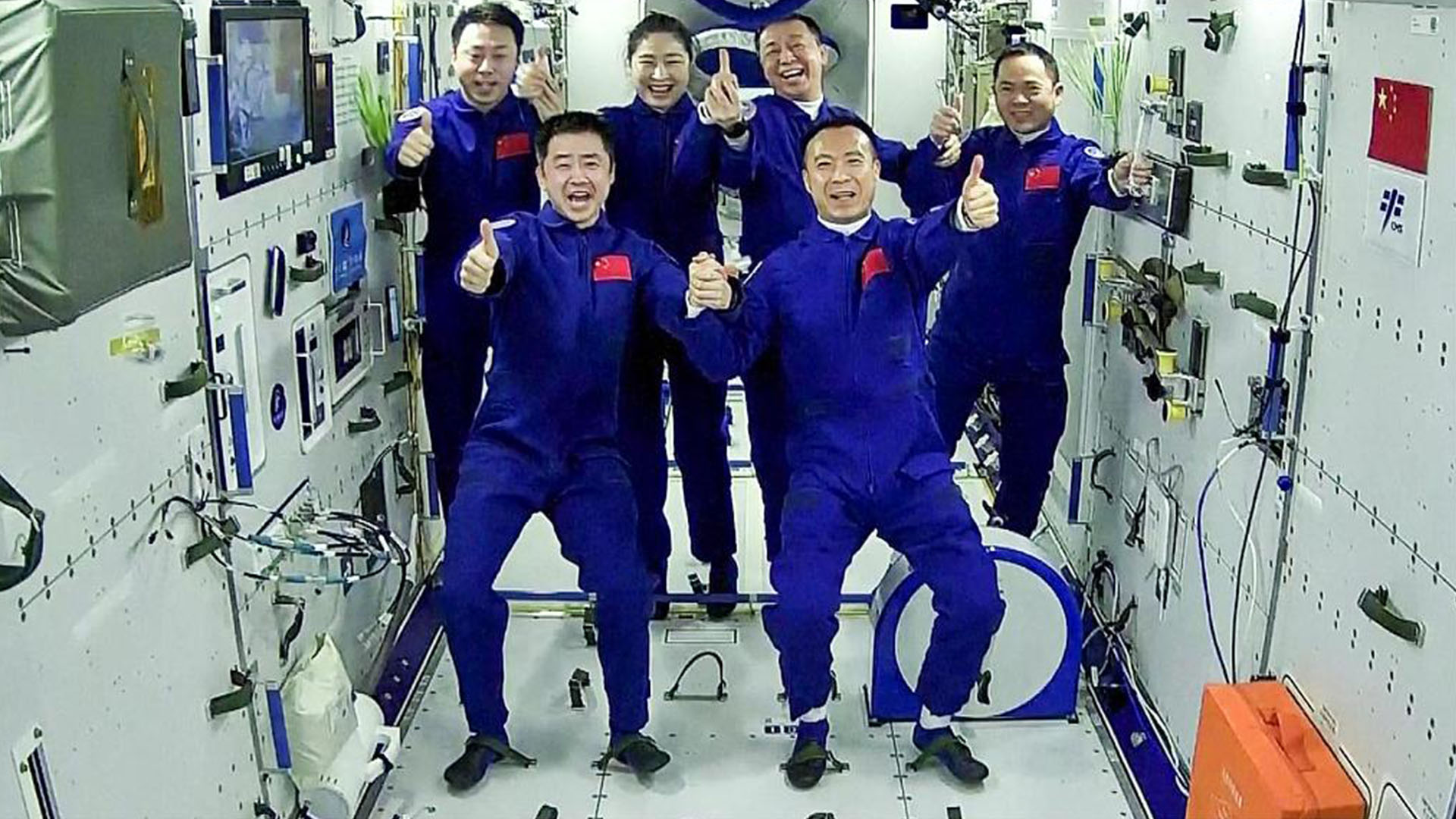
Watch: How does China's space station host two crews at once?
The Shenzhou-15 mission is aimed to wrap up the last stage of the CSS construction and start the first stage of its application and development, according to Ji.
During their six-month mission, the Shenzhou-15 crew will carry out tests related to long-term residence in the CSS at its three-module configuration. They will unlock, install and test 15 experiment cabinets, and carry out more than 40 scientific experiments and technical tests in the fields of space science research and application, space medicine and space technologies, Ji said.
The Shenzhou-15 crew will also conduct extravehicular activities (EVAs) three to four times and complete the installation of the Mengtian lab module extended pump sets and the exposure payload platform. In coordination with the ground team, the crew will complete six cargo transfers, moving cargo out of the space station from the airlock cabin, carrying out daily management and maintenance of the space station along with in-orbit exercise and training, Ji added.
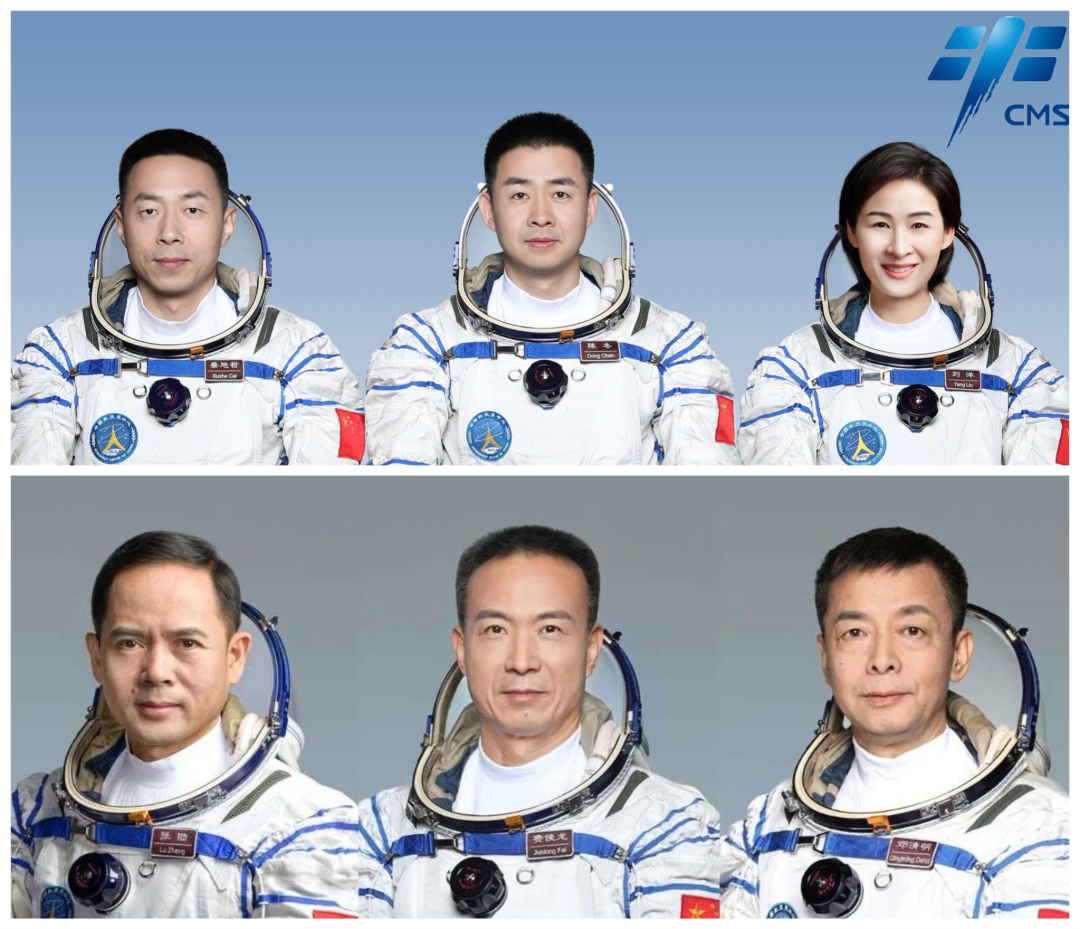
First Row (L-R): The Shenzhou-14 crew members: Cai Xuzhe (operator), Chen Dong (commander) and Liu Yang (operator). Second Row (L-R): The Shenzhou-15 crew members: Zhang Lu (operator), Fei Junlong (commander), and Deng Qingming (operator). /CMSA
First Row (L-R): The Shenzhou-14 crew members: Cai Xuzhe (operator), Chen Dong (commander) and Liu Yang (operator). Second Row (L-R): The Shenzhou-15 crew members: Zhang Lu (operator), Fei Junlong (commander), and Deng Qingming (operator). /CMSA
Six taikonauts, one dream
The Shenzhou-15 mission is the sixth flight mission of China's manned spaceflight program this year and the last one in the construction phase of the CSS, recording the final goal of China's "three-step" human space program initiated 30 years ago.
China has 39 astronauts in its first, second and third generations, while some taikonauts trained for decades without entering a real mission.
The Shenzhou-14 and Shenzhou-15 crews also include numerous astronauts who've been preparing for their first space mission for decades.
Shenzhou-15 commander Fei Junlong is returning to space after his Shenzhou-6 mission 17 years ago and operator Deng Qingming is making his space debut after a wait of 25 years. Operators Cai Xuzhe (Shenzhou-14) and Zhang Lu (Shenzhou-15) waited for their first space flights for 12 years.
"For me, I can spend my whole life getting prepared silently, but I will never allow myself to be unprepared when the task comes by," said Deng.
"No matter how old I am, I am needed by the nation. I feel happy today."
The six taikonauts of Shenzhou-14 and Shenzhou-15 missions, with average ages of 44 and 53, respectively, share the same goal of achieving China's space dream and made history with their unremitting efforts.
For the Shenzhou-15 crew, it seems that the trio set the record of the oldest crew, but commander Fei Junlong said that "our flying skills remain young."
The Shenzhou-14 commander Chen Dong made his space debut in 2016 on the Shenzhou-11 mission as an operator, and the two-time space traveler became the first Chinese to stay in orbit for more than 200 days, the CMSA said on November 22.
Liu Yang, operator for Shenzhou-9 and Shenzhou 14 missions, also made history as China's first female astronaut in space on June 16, 2012. Almost a decade later, Liu was back to the space to continue the construction of the CSS.
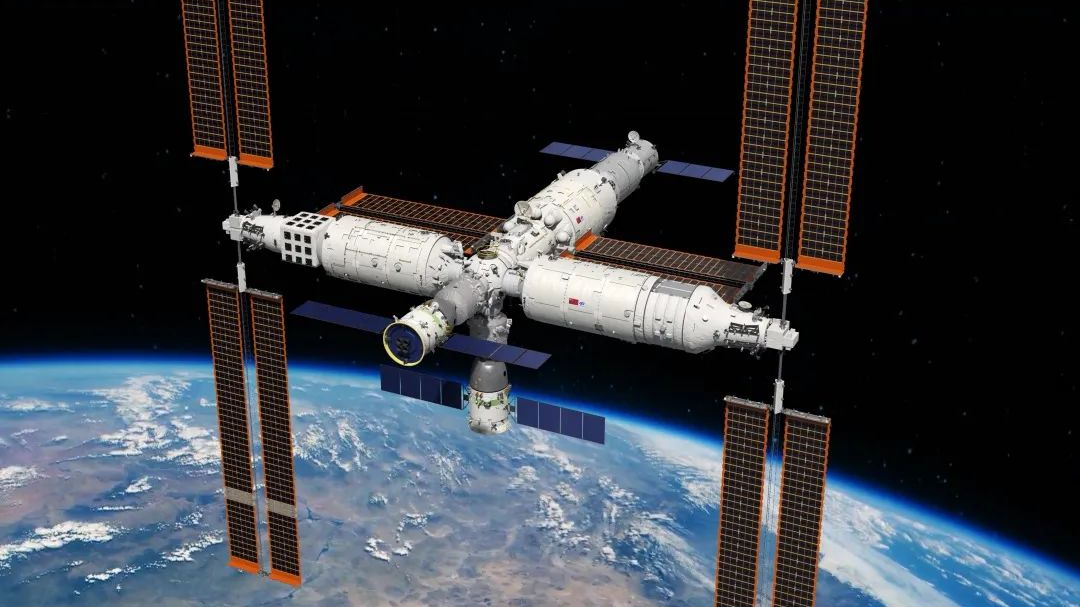
With the arrival of the Shenzhou-15 spaceship, the China Space Station has been expanded to its largest configuration formed of three modules and three spaceships, with a total mass of nearly 100 tonnes. /CMSA
With the arrival of the Shenzhou-15 spaceship, the China Space Station has been expanded to its largest configuration formed of three modules and three spaceships, with a total mass of nearly 100 tonnes. /CMSA
CSS welcomes astronauts from home and abroad
The successful launch of the Shenzhou-15 mission signals that China has sent 16 astronauts to space, while the campaign to find the next batch of astronauts who will explore new boundaries of space exploration is still ongoing.
The country started the selection process of the fourth batch of astronauts this September.
For the first time, the recruitment is open to applicants from Hong Kong and Macao special administrative regions. About 12 to 14 candidates will be chosen, including seven or eight pilots. Engineers will also be selected as well as two payload experts.
With the arrival of the Shenzhou-15 spaceship, the CSS has been expanded to its largest configuration of three modules and three spaceships, with a total mass of nearly 100 tonnes, according to Ji.
During their stay in orbit, the Shenzhou-15 taikonauts will witness the arrival of the Tianzhou-6 cargo spacecraft and Shenzhou-16 manned spaceship. The team will also have a handover with the upcoming Shenzhou-16 crew in orbit.
04:00
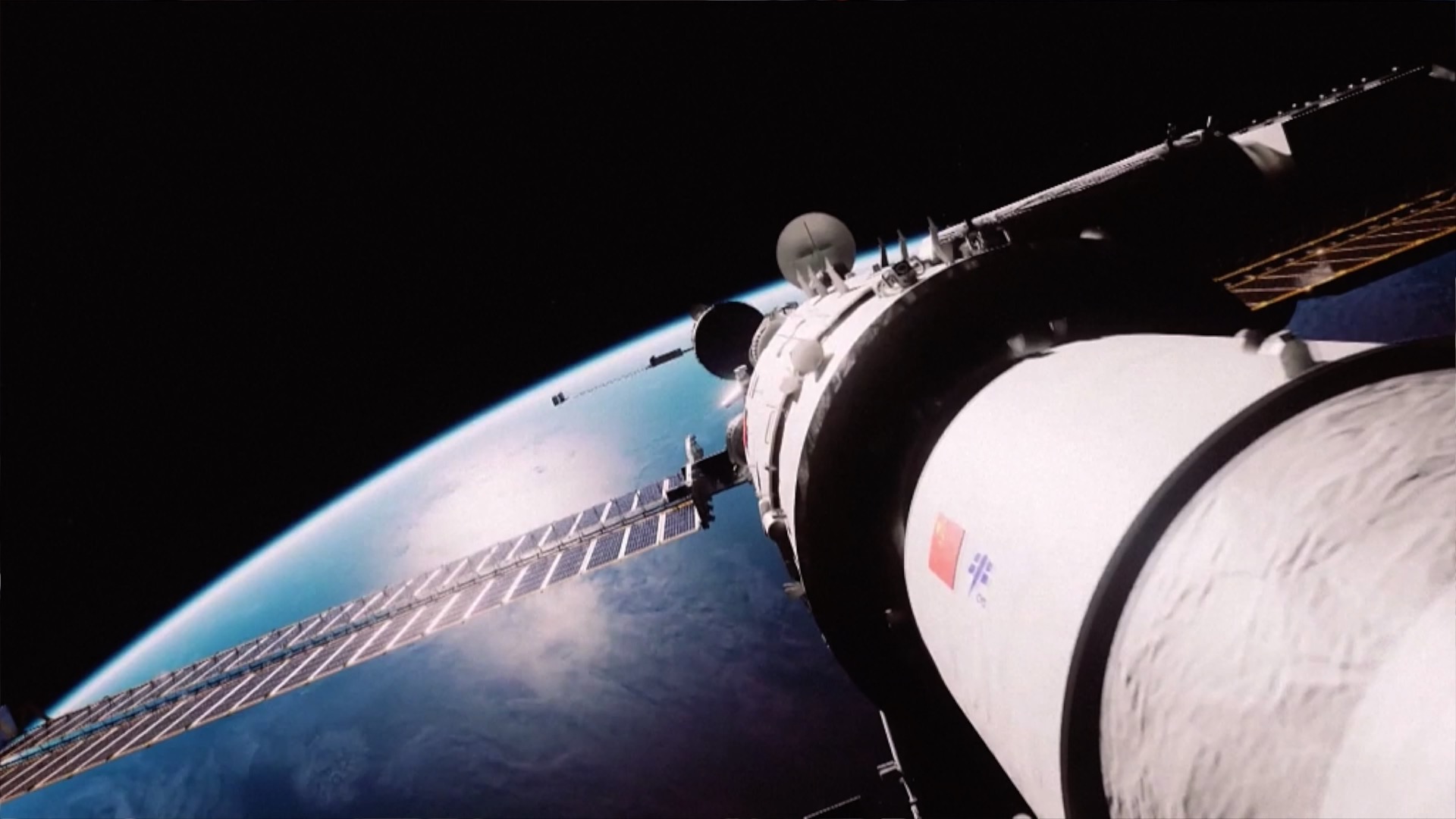
Astronauts from other countries are also welcome to conduct experiments in the CSS, Ji said, noting that many countries have applied to send astronauts to participate in spaceflight missions to the CSS, and the CMSA is coordinating with relevant countries on it.
Space science projects selected by China, the United Nations Office for Outer Space Affairs and the European Space Agency are being implemented as planned, and relevant payloads will be sent to the CSS for experiments starting from next year, Ji added.
Read More:
The Chinese are realizing their space dream